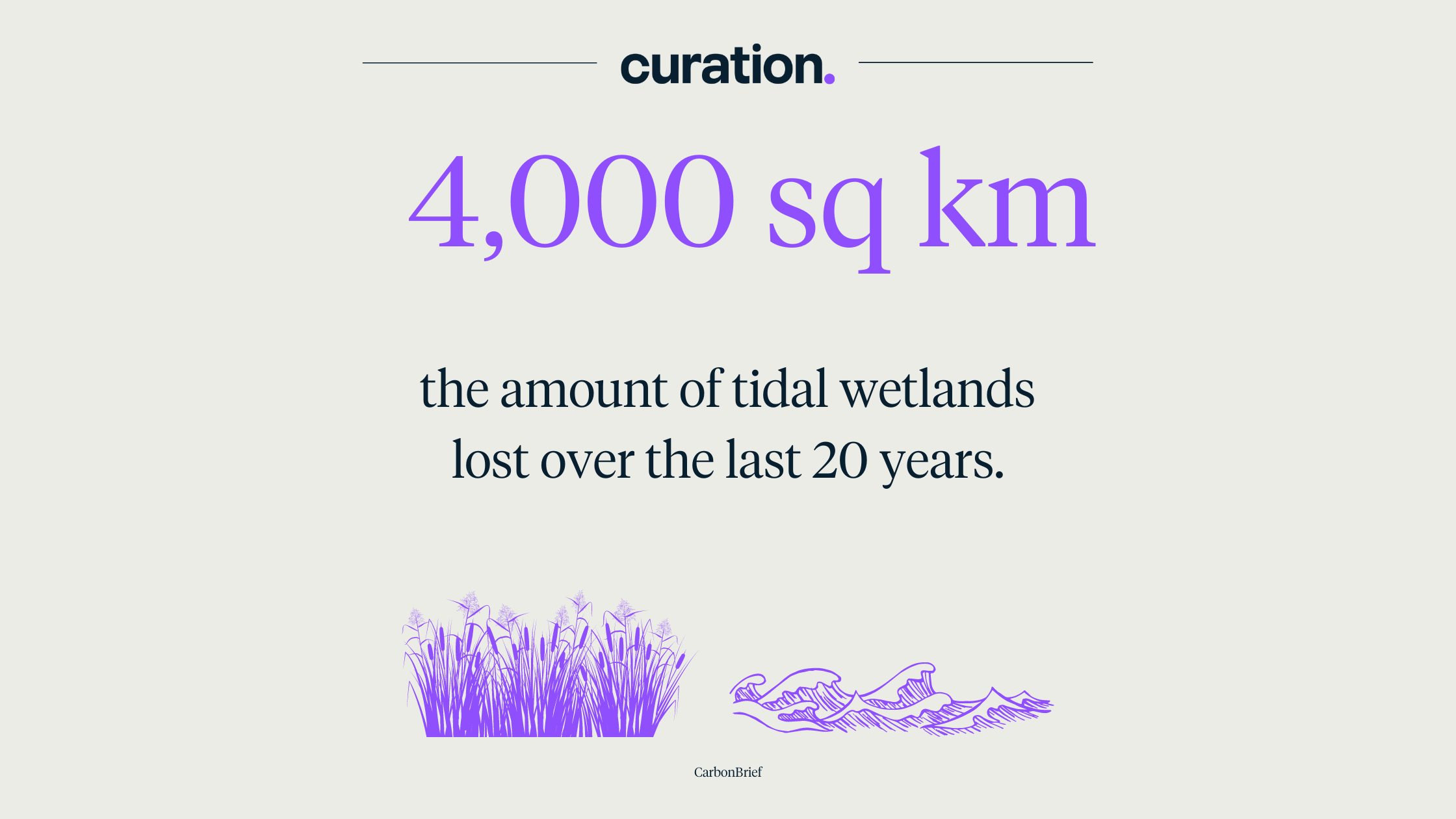
Wetlands are more valuable than you might think
What’s happening? The planet has lost 4,000 sq km of its tidal wetlands over the past 20 years, according to a study by international scientists. The analysis used satellite data to monitor tidal flats, tidal marshes and mangroves between 1999 and 2019. The researchers found that 13,700 sq km of tidal wetlands were lost during this period, primarily due to human activities including aquaculture, agriculture and urban expansion. (Science, Carbon Brief)
Why does this matter? Tidal wetlands hold immense ecological value and are often overlooked when thinking about habitat loss, as focus is often placed on other habitats such as forests.
The loss of tidal wetlands globally totals an area roughly the size of Goa or Mallorca – which is concerning, given their ability to store the largest quantities of carbon per unit area of ecosystem.
The world’s largest existing single tidal wetlands can be found in New Guinea, the northern Bay of Bengal, the Amazon delta and the Niger delta. The study found human activities, including land reclamation for agriculture and urban expansion, directly accounted for 27% of the tidal wetland losses. Indirect factors accounted for other changes, such as sea level rise, coastal erosion and coastal development. Nearly 70% of the net global tidal wetland loss was found in Asia, particularly in China, India and Myanmar.
Ecologically, functioning wetlands offer a multitude of benefits. They provide a habitat for marine species, a nursery for juvenile fish, and act as a natural flood barrier. They can also adapt to rising sea levels by growing vertically. Wetlands are also of importance to human health and personal wellbeing, which we have explored previously.
Global wetland loss also has implications for climate mitigation. Unlike freshwater wetlands, tidal wetlands do not release methane, and are one of the only ecosystems that can absorb carbon permanently if left undisturbed. Restorative efforts, particularly those that imitate natural processes – such as the creation of peat moss barriers and dense plant layers – are effective in preserving wetlands’ carbon sequestration potential.
Can losses replace gains? The study mentions the creation of 9,700 sq km of tidal wetlands from human and natural efforts, which offset 71% of the net loss. Wetlands have relatively low carbon sequestration rates compared to forests, but continually accumulate carbon over their lifetimes. Hence, the creation of new wetlands is unlikely to account for or replace decreases in more mature, long-standing ones when thinking about carbon absorption.
What is being done to help? While natural processes go some way to facilitating restoration, human-driven efforts are still important. Some governments are investing in this, for example through the EU-funded restoration project WaterLANDS. Indonesia is also resuming large-scale mangrove restoration on over 150,000 hectares of degraded habitat following funding shortages during the pandemic.
Looking more locally, authorities in Chinese province Hainan are making efforts to balance aquaculture projects with wetland conservation concerns. Elsewhere, Dutch start-up ReShore combines mangrove and wetland protection with aquaculture using a double pontoon structure to combat large waves while suspending existing systems like mussel ropes and seaweed lines underneath.
Lateral thought – Removing wild spaces and the resulting biodiversity loss can give rise to other problems.
Increasing human interaction with nature and zoonotic disease outbreak is a link we have explored before. We continue to see this in today’s headlines – for example, in recent outbreaks of monkeypox and, potentially more worryingly, in new strains of bird flu from intensive livestock farming.
Climate-driven extreme weather contributes to this – recent outbreaks of Japanese encephalitis virus in Australia were attributed to severe flooding on the east coast, after additional wetlands attracted migratory waterbirds carrying the virus from Asia.


